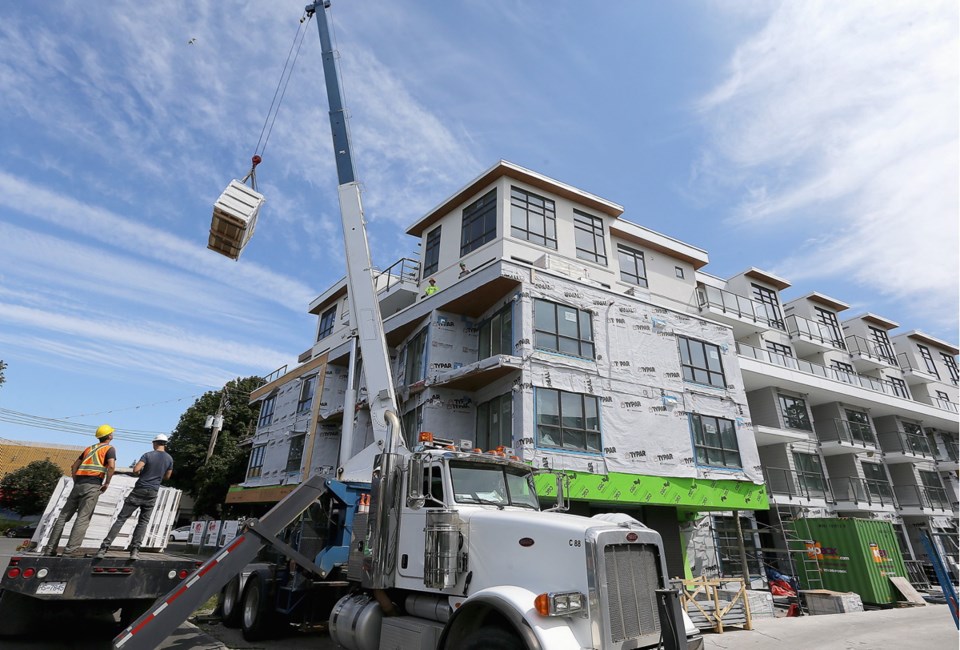Government policy designed to cool the housing market has played a role in slowing the pace of all construction in Greater Victoria, figures released Monday by Statistics Canada show.
The agency noted there was a five per cent drop in total investment in building construction through the first five months of this year in the region, compared with the same period last year.
From January through May of this year, more than $930 million was invested in building construction — all types of new construction, renovations, conversions and smaller permitted projects such as swimming pools and garages — in Greater Victoria, a drop from the $977 million recorded through the same period in 2018.
Investment in residential construction dropped to $733 million through the first five months of 2019 compared with $770 million at that point last year.
Investment in non-residential construction slipped down to $198 million from $207 million.
“I think it is policy-driven to a large degree,” said Casey Edge, executive director of the Victoria Residential Builders Association. “We have every level of government implementing a variety of policies that have definitely had a dampening effect on the supply side.”
Edge was referring to federal mortgage rules — essentially a stress test to ensure borrowers can withstand a jump in interest rates — along with the provincial speculation and vacancy tax, which applies to vacant homes in Greater Victoria, Nanaimo, Lantzville, Metro Vancouver, the Fraser Valley, Kelowna and West Kelowna. The tax was designed to reduce the number of empty homes in the province.
Higher development fees at the municipal level are also being cited as a reason for a slower pace of construction.
Edge said there was bound to be some slowdown in the region anyway as the real estate market started to cool last year after years of rising house prices.
Through the end of June this year, the capital region has seen 1,614 new homes started. That’s an 8.7 per cent drop from the 1,768 through the first half of last year.
Rory Kulmala, chief executive of the Vancouver Island Construction Association, agreed that policy has played a role in the drop in construction investment. But he said the federal data miss some projects.
“What’s not in [Statistics Canada’s] numbers is: There are no engineering projects, they don’t reflect roads, sewage-treatment plants, hydro-power initiatives,” he said. “And the [dollar figures] still demonstrate a high level of activity.”
Kulmala said the region has capacity issues limiting just how much can be built. Builders and construction companies are still in constant search for skilled trades people and labourers, he said.
“We typically have a low point in the second quarter. And we will see a spike in July and August, and then we should start to see the kinds of numbers we are used to seeing,” Kulmala said.
“The question is: Will it rise as high, will we see the same kinds of peaks?”
Kulmala said the peaks likely will be lower this year because of the government policies.
“There’s enough policy in place and enough government initiatives that are tempering the residential market, for sure,” he said, though he remains bullish on the industry.
“It’s supply and demand. Victoria is still seeing a very low [rental] vacancy rate and we’re seeing a modest growth rate. Simple economics suggest we will see more building,” he said, though he noted it will be multi-family developments that are built, rather than single-family homes.
“And those will keep us busy on the south Island.”



